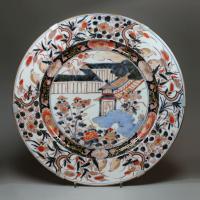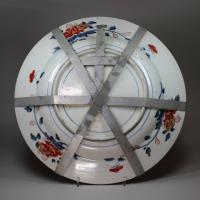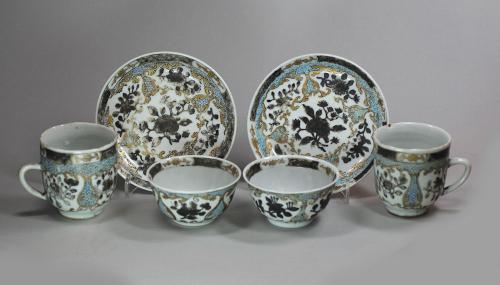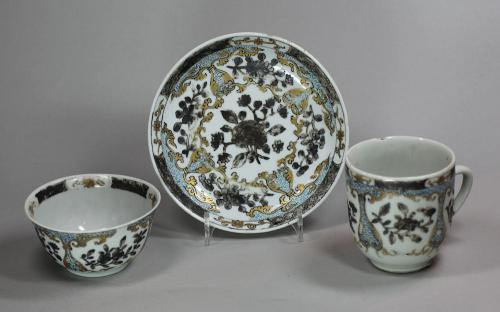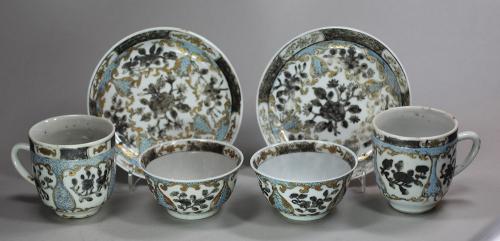
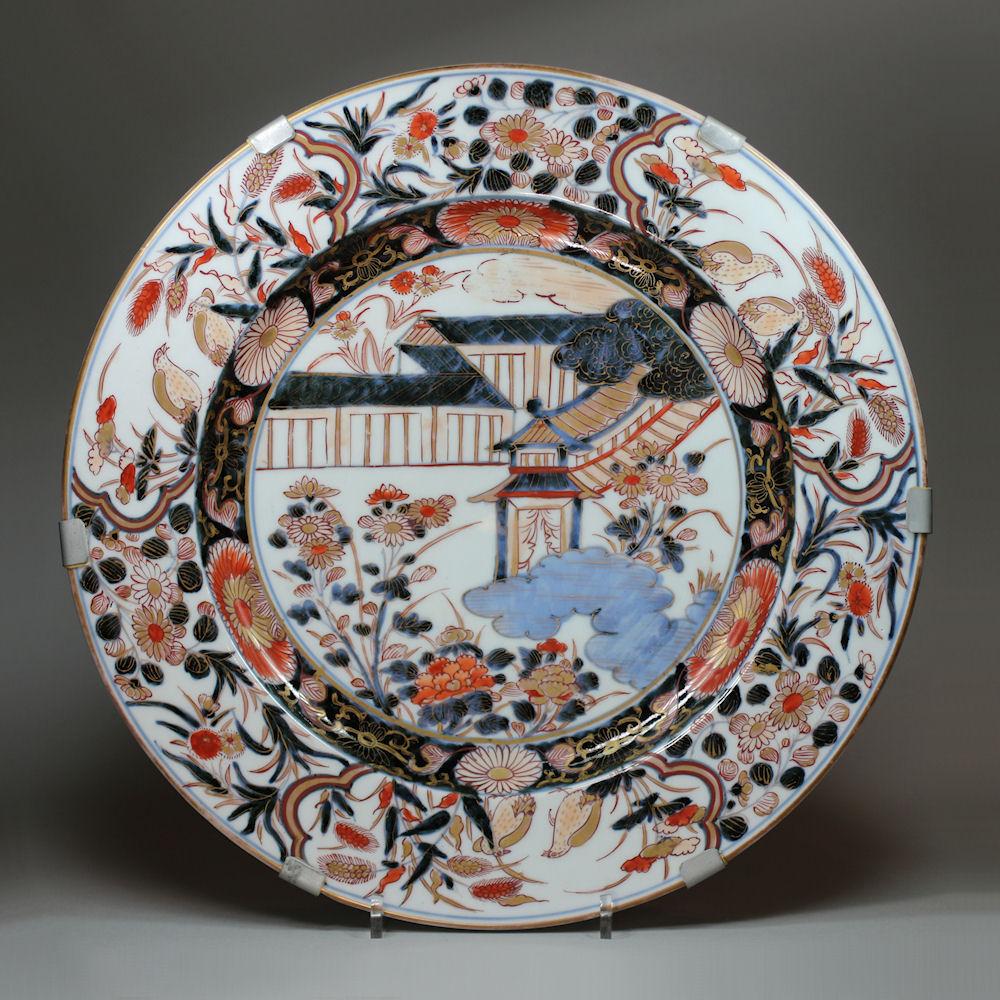
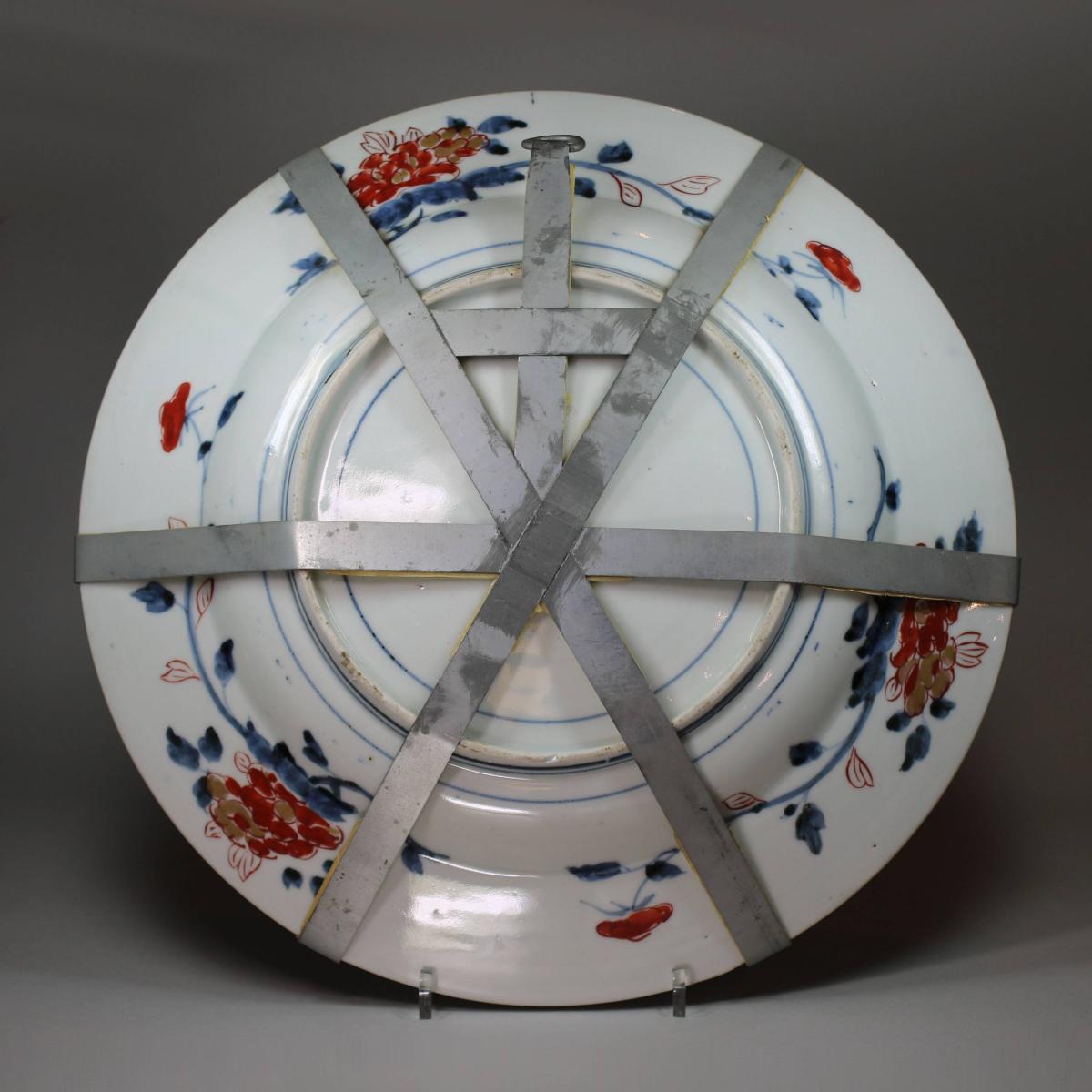
Price on application
This object is eligible for a Certificate of BADA Provenance
The BADA Standard
- Since 1918, BADA has been the leading association for the antiques and fine art trade
- Members are elected for their knowledge, integrity and quality of stock
- Our clients are protected by BADA’s code of conduct
- Our dealers’ membership is reviewed and renewed annually
- Bada.org is a non-profit site: clients deal directly with members and they pay no hidden fees
Japanese Imari dish, 18th century, decorated in underglaze cobalt blue, overglaze enamels and gilt to the centre with a landscape scene with a long building and sprays of chrysanthemum, peony and lotus, all shrouded in cloud, within a dark blue band with large chrysanthemum heads and scrolling gilt lotus, the wide rim with three lobed cartouches each containing a pair of quails underneath millet, against a ground densley decorated with flowerheads, grasses and foliage, the reverse with three large floral sprays and concentric circles in underglaze blue.
Diameter: 38.3cm. (15 1/16in.)
Condition: Very slight wear to enamels
Notes:
The depiction of quails with autumn grasses, including millet, gained popularity during the Song Dynasty in China. One notable court painter in particular, Li-An-Chung, became associated with this motif during the Southern Song (1127-1279). As part of the significant cultural exchange between the two countries during this period, quail paintings made their way to Japan, finding a place in the collections of Buddhist temples and the residences of wealthy Muromachi military families. In Japan, artists began creating quail paintings inspired by these Chinese models, leading to the widespread popularity of the motif in various art forms such as screens, lacquerware and ceramics, as seen here. During the 17th century the Tosa school, in particular, produced exquisite examples of quail paintings, likely influenced directly by Chinese precedents. Quails, known for their adaptability and resilience in diverse environments, symbolise vitality. Paired with the motif of autumn grasses, which signifies the changing seasons, these paintings and ceramic designs express harmony with nature and the beauty of impermanence (mono no aware).
Dimensions
Diameter: 38.3cm. (15 1/16in.)Condition report
Very slight wear to enamels.Stock number
U284The BADA Standard
- Since 1918, BADA has been the leading association for the antiques and fine art trade
- Members are elected for their knowledge, integrity and quality of stock
- Our clients are protected by BADA’s code of conduct
- Our dealers’ membership is reviewed and renewed annually
- Bada.org is a non-profit site: clients deal directly with members and they pay no hidden fees


